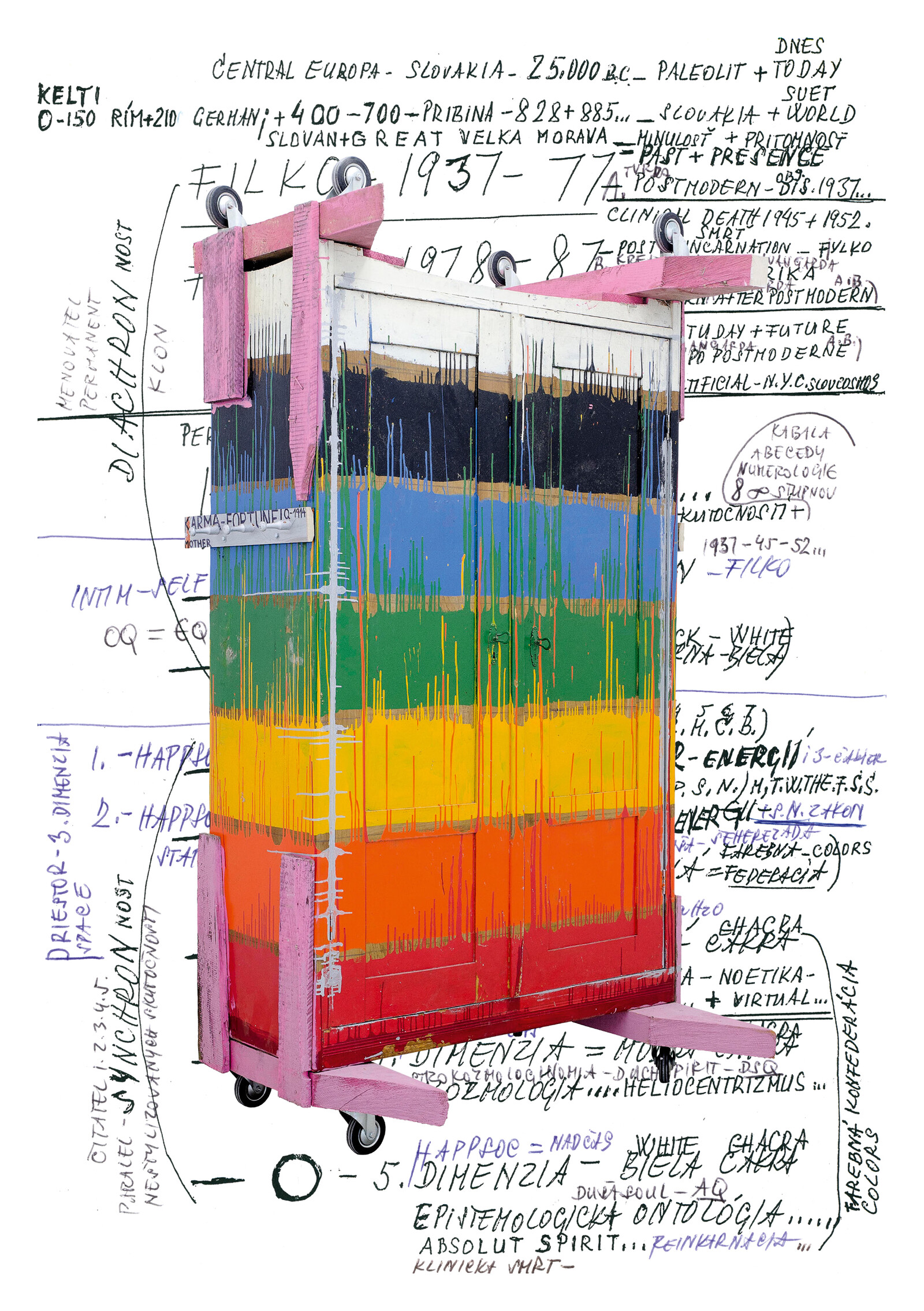A Retrospective
March 19–June 5, 2022
Burgring 2
8010 Graz
Austria
Hours: Tuesday–Sunday 10am–6pm
T +43 316 740084
info@halle-fuer-kunst.at
Curated by Sandro Droschl.
With this retrospective of the work of Slovak artist Stano Filko, which has long been in preparation, the HALLE FÜR KUNST Steiermark takes a fresh look at a sustainably influential and utopian body of work. With generous loans from the Slovak National Gallery and the Linea Collection, Bratislava, this exhibition highlights the significance of this outstanding artistic position and its progressive design for society for today’s less visionary times.
Filko was an important representative of the central European neo-avant-gardes, with an oeuvre that developed over many decades and remains remarkably contemporary. He had great success in the 1960s but then became a persona non grata after the Prague Spring was defeated, and after several years he fled the country in daredevil manner in a Škoda 120L, which he then painted white and presented at the center of his participation in Documenta 7. Thereafter Filko emigrated to New York. Following the fall of the Iron Curtain he returned to Bratislava and established the studio building Snežienková in the style of a “total work of art” whose rooms and artworks all adhered in color and size to a prearranged structure called System SF.
This concept was on the one hand stringent and yet still flexible, enabling Filko not only to give structure to and question his expansive and originally conceptual work, but also to rethink ideas such as the transcendental in the sense of an overarching impulse, beyond any essentialist readings, which was evident in the media diversity and openness of this concept of art.
Filko’s complex oeuvre refers to the Fluxus, Nouveau Realisme, Dada, and Pop Art movements, while its independent multiperspectival development remains relevant today. In the early 1960s, Filko began to design installations, pneumatic sculptures, and utopian architectures that reflected his growing interest in cosmology and metaphysics. This was also seen in his happenings and actions. Always fascinated by anti-art, nihilism, and iconoclasm, Filko created several interactive environments based on his ideas of an open concept of media and interdisciplinarity.
To the last, Filko accompanied his artworks with texts, which he was always testing and rewriting. Notwithstanding all the creativity, this was a structured approach that made it possible for the artist to develop his projects simultaneously as production and reflection, as well as facilitating a better understanding of his originally conceptual approach. Thus Filko pursued a holistic way of working that places art and life together as one so as to work toward an alternative view of reality by means of the unbounded work of art.
This exhibition includes selected works from all the artist’s creative periods in order to draw attention from the systematic overview to individual works and their points of reference to each other. Alongside rooms focusing on specific themes or periods, the large exhibition hall in particular serves the purpose of presenting works from different phases together in loose and yet intensive arrangements, so as to see the autonomy and dynamics of each single work within a process of free association with the others. The distinctions between variously evaluated and studied different periods (the early phase that was recognized within a history of art, the neo-expressive “American” phase, and the self-reflective late phase) is here replaced by an overview and recognition of one entire artistic position.
Given the significance of Stano Filko’s large oeuvre established over several decades, and his charismatic personality, comparisons with meta-artists such as Joseph Beuys, Dieter Roth, and Paul McCarthy seem evident, and yet these would take us in the wrong direction, as it is important to avoid any stylization of Filko as a mythical artist figure whose excessive production and own theoretical frameworks might seem to lead to a hermetic interplay between the total work of art and a defined system. Rather Filko was concerned to overcome barriers and enter into dialogue. His works are characterized by a highly developed dialogic element and are often intended as offers for involving viewers. Not least thanks to his curiosity, liking of experimentation, and self-criticism Filko succeeded in keeping his works present, which is also due to his future-looking themes focusing on the cosmos and the body and spirit in reaction to—experienced and projected—realities.
Filko’s oeuvre is telling in particular because individual works often refute any kind of system. Unlike a classical retrospective, this exhibition tries not to present an oeuvre in a traditional manner, but to show it in the form of a first attempt at an overview that also activates single works, so as to emphasize the topicality and visionary in Filko today.
This project is accompanied by a program of events and education and a publication, with the participation of Lucia Gregorová Stach, Patricia Grzonka, Christian Höller, Mira Keratová, Hans Ulrich Obrist, Boris Ondreička, Jan Verwoert, and others.
Press inquiries: Helga Droschl, Alexia Meninkou


